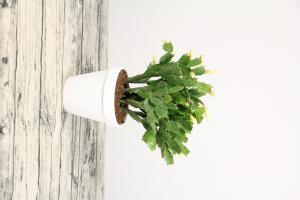Can Tomato Plants be Cut Back?
Tomatoes are one of the most popular vegetables among home gardeners. While they are relatively easy to grow, they can often become unruly and out of control, leading many to wonder if they can be cut back. The short answer is yes, tomato plants can be cut back. However, there are some important factors to take into consideration before taking the shears to your plants.
Why Cut Back Tomato Plants?
There are several reasons why you might want to cut back your tomato plants. Perhaps they have become too tall and are shading out other nearby plants. Or maybe they have gotten too bushy and are taking over your garden bed. Cutting back tomato plants can help to keep them more compact and manageable, and can increase air circulation around the plants, helping to prevent diseases.
When to Cut Back Tomato Plants
The best time to cut back tomato plants is during the early stages of growth. This is typically within the first six weeks after planting. Cutting back young plants encourages a fuller, bushier growth habit and can lead to increased fruit production. Alternatively, you can wait until your plants are older and have already produced fruit, and then cut them back after the final harvest. This can help to tidy up your garden and prepare the plants for the next growing season.
How to Cut Back Tomato Plants
When it comes to cutting back tomato plants, it's important to use a clean, sharp pair of scissors or pruning shears. Begin by identifying the areas of the plant that you wish to remove, such as dead or sickly stems, or any that are growing too tall or too wide. Make clean cuts at a 45-degree angle just above a healthy set of leaves or stem. Avoid cutting too much of the plant at once, as this can lead to shock and stunted growth.
Pruning Techniques for Different Tomato Varieties
While all tomato plants can be cut back, different varieties may require different pruning techniques. Determinate tomato plants, which grow to a certain size and then stop, generally do not require extensive pruning. Instead, simply remove any dead or diseased stems as needed. Indeterminate tomato plants, on the other hand, continue to grow until they are killed by frost, and can benefit from regular pruning to control size and encourage fruit production. In general, it's important to research the specific pruning needs of your tomato variety before making any cuts.
Conclusion
In summary, tomato plants can be cut back to help control their size, increase air circulation, and promote healthier growth. The best time to cut back is during the early stages of growth, or after the final harvest. However, it's important to use clean, sharp tools and to avoid cutting too much of the plant at once. Different tomato varieties may also require different pruning techniques. With these considerations in mind, cutting back your tomato plants can help to keep them healthy, productive, and manageable.

 how many times do yo...
how many times do yo... how many planted tre...
how many planted tre... how many pine trees ...
how many pine trees ... how many pecan trees...
how many pecan trees... how many plants comp...
how many plants comp... how many plants can ...
how many plants can ... how many plants and ...
how many plants and ... how many pepper plan...
how many pepper plan...
































